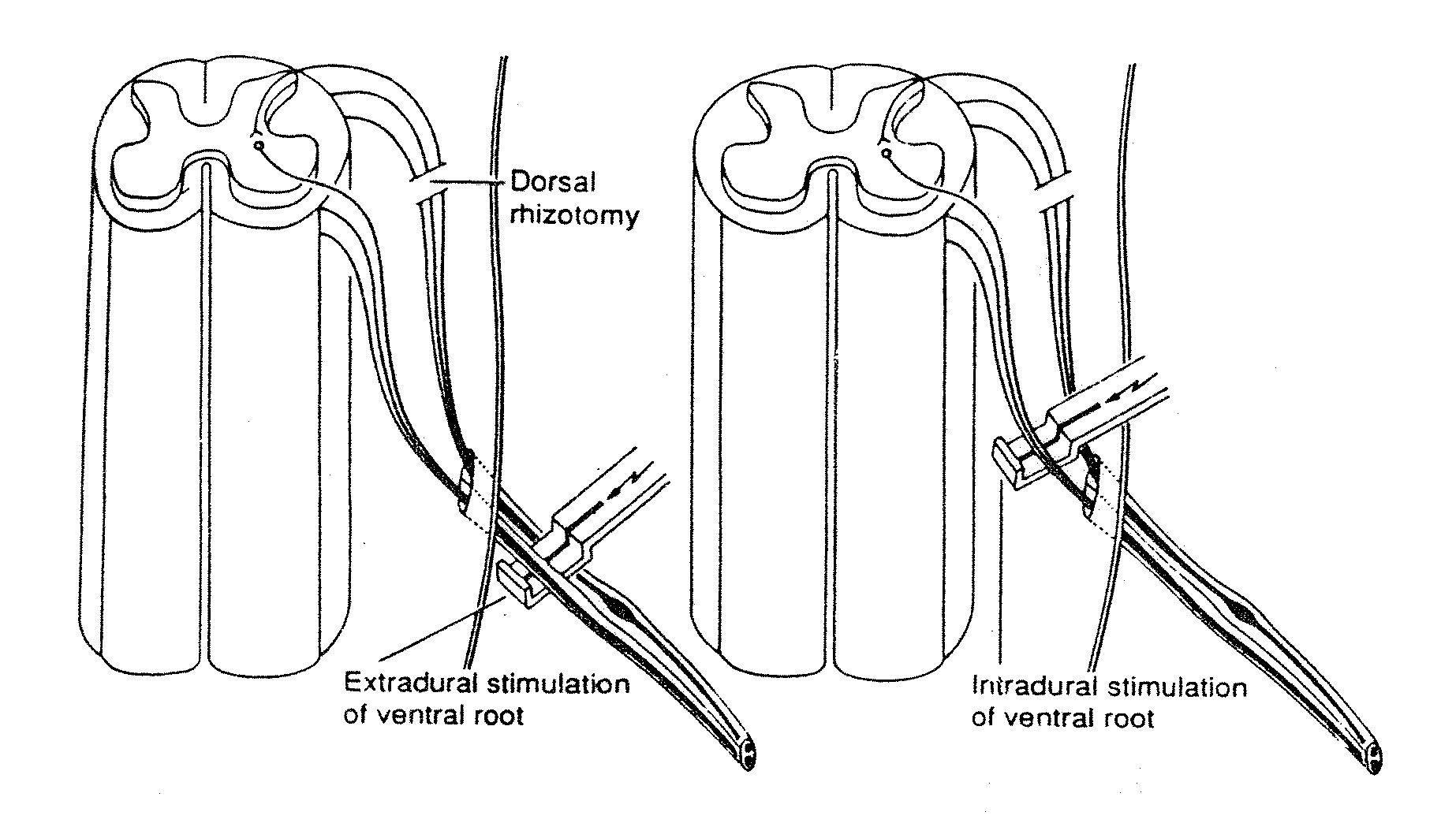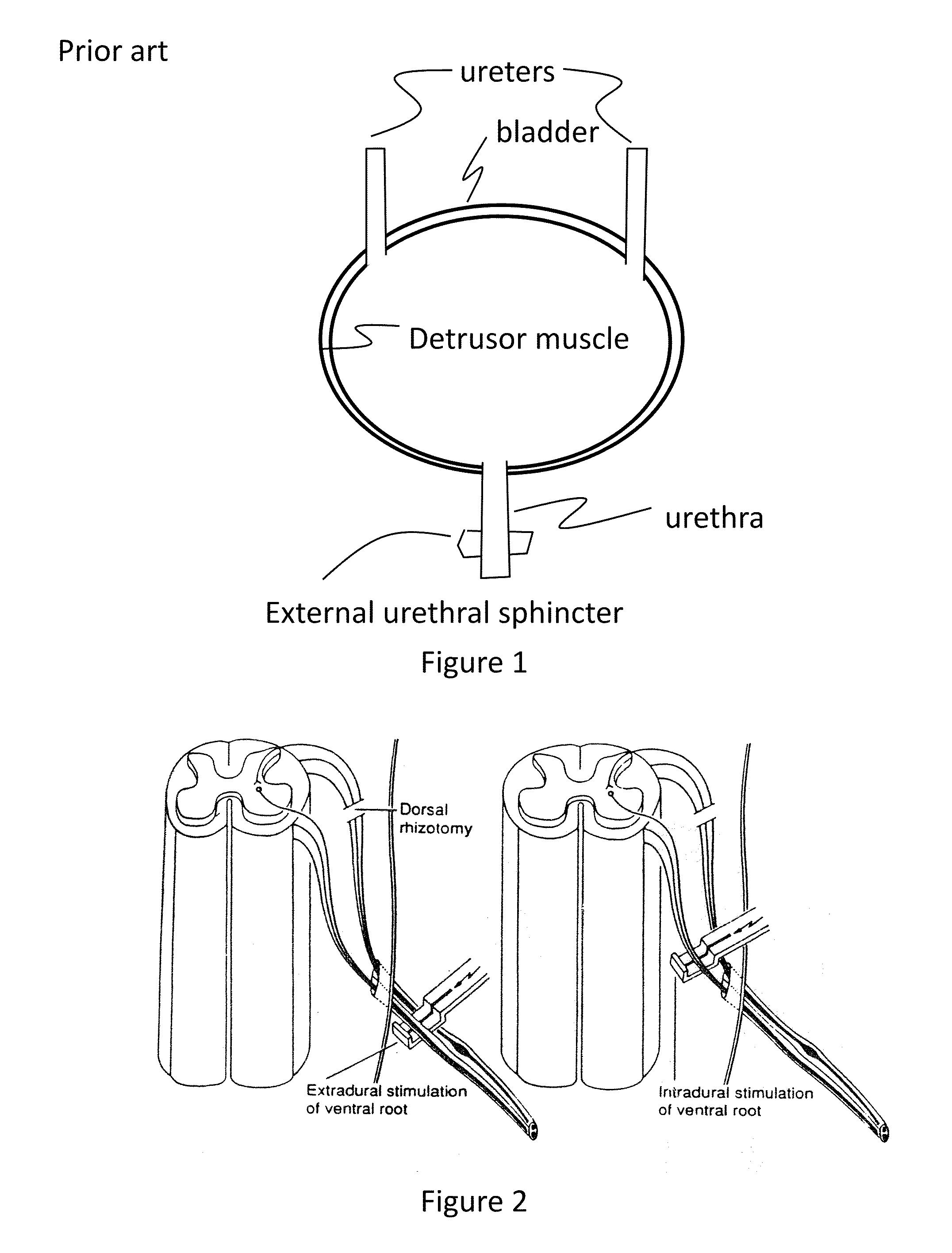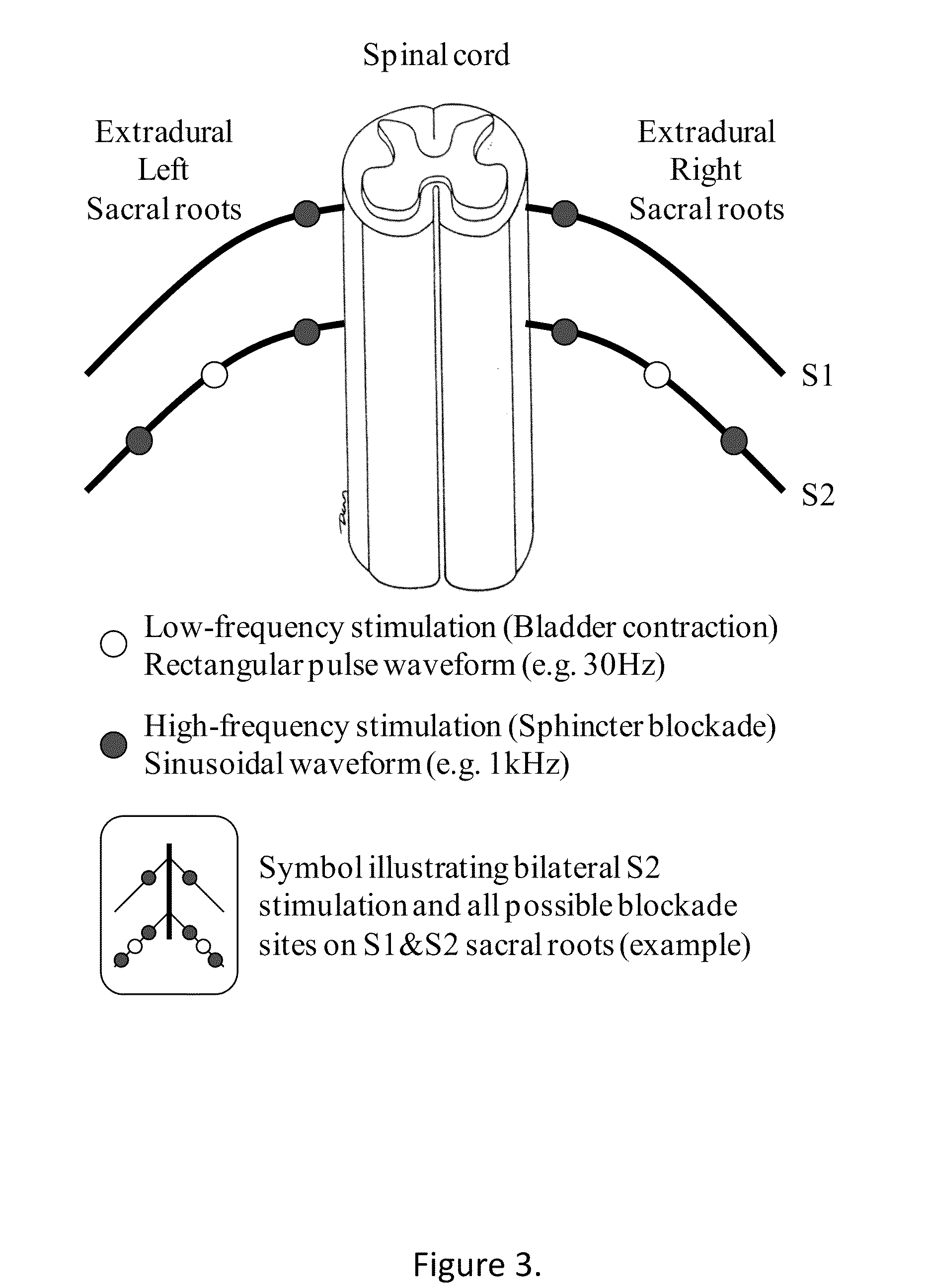Sacral neurostimulation to induce micturition in paraplegics
- Summary
- Abstract
- Description
- Claims
- Application Information
AI Technical Summary
Benefits of technology
Problems solved by technology
Method used
Image
Examples
Embodiment Construction
Applicants propose a new neurostimulation strategy based on the hypothesis stated previously. A low-frequency (e.g. 30 Hz) monophasic current stimulation is applied, unilaterally or bilaterally, to S2 sacral nerve(s) (or S1 eventually) in order to induce a satisfactory contraction of the bladder muscle. The degree of contraction can be modulated by adjusting the amplitude and pulse width of stimulation. In most cases, detrusor contractions are present and the EUS contracts as well. The stimulation-evoked EUS contraction can be triggered by direct and / or reflex mechanisms due to efferent and / or afferent fibres activation respectively. Both types of EUS activation can be avoided by blocking axons innervating the EUS with high-frequency stimulation. In the example of FIG. 3, a sinusoidal waveform at 1 kHz is chosen. In order to eliminate direct EUS activation, a selective blockade can be applied distally (between the low-frequency stimulation site and the EUS), whereas for reflex EUS a...
PUM
 Login to View More
Login to View More Abstract
Description
Claims
Application Information
 Login to View More
Login to View More - R&D
- Intellectual Property
- Life Sciences
- Materials
- Tech Scout
- Unparalleled Data Quality
- Higher Quality Content
- 60% Fewer Hallucinations
Browse by: Latest US Patents, China's latest patents, Technical Efficacy Thesaurus, Application Domain, Technology Topic, Popular Technical Reports.
© 2025 PatSnap. All rights reserved.Legal|Privacy policy|Modern Slavery Act Transparency Statement|Sitemap|About US| Contact US: help@patsnap.com



